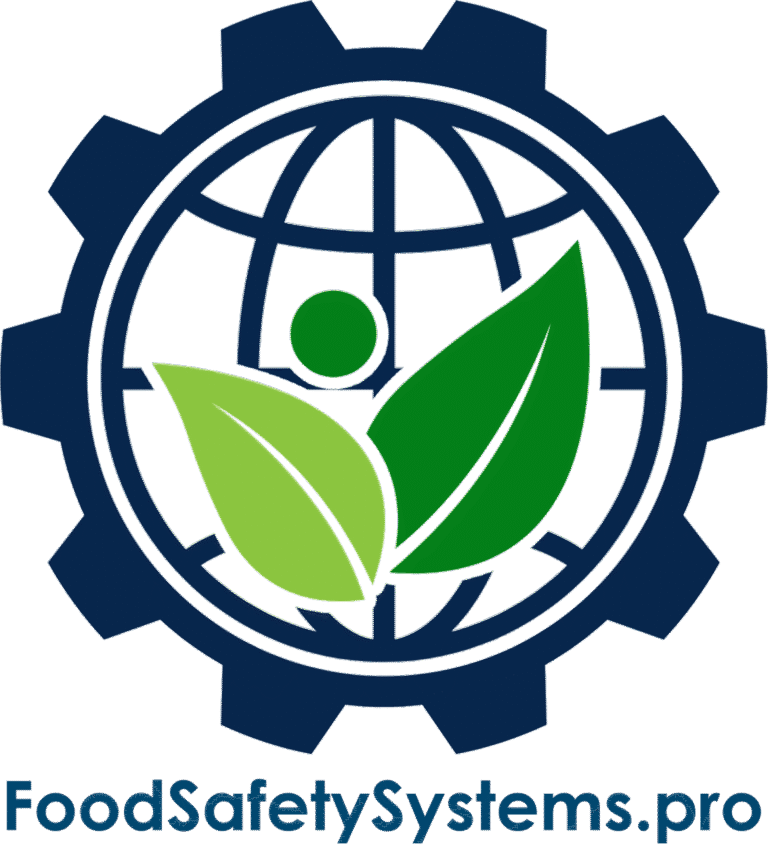Water, Air & Ice Safety Controls
Aligned with SQF Code Edition 9 – System Element 2.6.4
Requirement Overview
SQF Code Edition 9, System Element 2.6.4, requires:
“Where water, air, or ice is used in production or as an ingredient, controls shall be implemented to ensure safety and prevent contamination.”
Water, compressed air, and ice must be maintained to food-safe standards across all production, sanitation, and handling processes.
Disclaimer: Food Safety Systems is not affiliated with or endorsed by the Safe Quality Food Institute (SQFI). This article is provided for compliance support and educational purposes only. For official guidance, visit www.sqfi.com.

Key Compliance Objectives
-
✓ Ensure all water, air, and ice meet food safety standards
✓ Prevent contamination through filtration, testing, and hygiene practices
✓ Maintain validated testing schedules and emergency protocols
✓ Document system controls, test results, and verification records
Step-by-Step Compliance Implementation
1. Implement a Water Safety Program
-
Control Points by Use Case:
Water Use
Monitoring Requirement
Ingredient Use
Monthly microbiological testing (e.g., coliforms)
Processing Activities
Annual testing for heavy metals and chemicals
Cleaning/Utilities
Backflow prevention inspections
Handwashing Stations
Temperature and pressure checks
Evidence to Maintain:
-
• Most recent 12 months of lab test results
• Backflow prevention test logs
• Facility plumbing diagrams indicating potable vs. non-potable zones
| Water Use | Monitoring Requirement |
|---|---|
| Ingredient Use | Monthly microbiological testing (e.g., coliforms) |
| Processing Activities | Annual testing for heavy metals and chemicals |
| Cleaning/Utilities | Backflow prevention inspections |
| Handwashing Stations | Temperature and pressure checks |
- • Most recent 12 months of lab test results • Backflow prevention test logs • Facility plumbing diagrams indicating potable vs. non-potable zones
2. Maintain Compressed Air Controls
-
Compressed Air for Food Contact Must Include:
-
• Filtration: Minimum 0.01-micron filters for direct contact
• Testing: Annual microbial, oil, and particulate testing
• Maintenance: Scheduled filter changes, pressure gauge checks, and logbooks
Evidence to Maintain:
-
• Compressed air quality testing reports
• Filter change logs and maintenance history
• Calibration records of air pressure monitoring devices
- • Filtration: Minimum 0.01-micron filters for direct contact • Testing: Annual microbial, oil, and particulate testing • Maintenance: Scheduled filter changes, pressure gauge checks, and logbooks
- • Compressed air quality testing reports • Filter change logs and maintenance history • Calibration records of air pressure monitoring devices
3. Establish an Ice Safety Program
-
Ice Control Measures:
-
• Production : Use designated, closed-system ice makers only
• Handling : Use dedicated scoops and clean containers
• Testing : Conduct quarterly microbial screening
• Labeling : Clearly identify “FOOD USE ONLY” on machines and storage bins
Evidence to Maintain:
-
• Cleaning and sanitation logs for ice machines
• Microbiological test results
• Supplier verification records (if purchasing ice externally)
- • Production : Use designated, closed-system ice makers only • Handling : Use dedicated scoops and clean containers • Testing : Conduct quarterly microbial screening • Labeling : Clearly identify “FOOD USE ONLY” on machines and storage bins
- • Cleaning and sanitation logs for ice machines • Microbiological test results • Supplier verification records (if purchasing ice externally)
4. Prepare Emergency Response Protocols
-
Contingency Plans Should Cover:
-
• Water supply disruptions and boil water alerts
• Compressed air equipment failure
• Use of alternate water/ice sources with verification
Evidence to Maintain:
-
• Emergency action procedures
• Staff emergency response training logs
• Agreements with backup suppliers (water/ice/filtration services)
- • Water supply disruptions and boil water alerts • Compressed air equipment failure • Use of alternate water/ice sources with verification
- • Emergency action procedures • Staff emergency response training logs • Agreements with backup suppliers (water/ice/filtration services)
Common Audit Findings & Recommended Fixes
Non-Conformance
Recommended Fix
Missing water test records
Schedule third-party testing and build a testing log
No filtration on compressed air
Install food-grade inline filters with PM tracking
Dirty or untested ice machines
Sanitize weekly, test quarterly, and log activity
No emergency protocols in place
Draft, train, and practice emergency response plans
| Non-Conformance | Recommended Fix |
|---|---|
| Missing water test records | Schedule third-party testing and build a testing log |
| No filtration on compressed air | Install food-grade inline filters with PM tracking |
| Dirty or untested ice machines | Sanitize weekly, test quarterly, and log activity |
| No emergency protocols in place | Draft, train, and practice emergency response plans |
Auditor Verification Checklist
During audits, be prepared to show:
-
• Twelve months of water test documentation
• Most recent compressed air quality test results
• Ice handling SOPs and sanitation records
• Emergency procedures for water and air supply failures
Implementation Roadmap
Assess Your Systems
-
✓ Map water and air points of use
✓ Review risk of contamination by area or process
Implement Controls
-
✓ Install backflow preventers, air filters, and labeled ice machines
✓ Create and assign testing schedules
Train Your Team
-
✓ Deliver best practices for hygiene and handling
✓ Conduct emergency drills for utility disruptions
Monitor & Validate
-
✓ Keep testing logs current
✓ Review records monthly and update annually
Why This Matters?
Effective water, air, and ice management:
-
✓ Prevents microbial, chemical, and physical contamination
✓ Ensures compliance with FDA, CFIA, and other regulations
✓ Supports audit readiness and product integrity
✓ Reduces risk of costly recalls or enforcement actions
Need Help Developing Your Utility Safety Program?
Food Safety Systems provides:
-
✓ Water, air, and ice safety SOP templates
✓ Testing schedules and logbook templates
✓ Emergency response planning guides
✓ Staff training materials and audit prep checklists
Privacy Policy | Terms of Service | Disclaimer
Powered by Consultare Inc. Group, A Compliance Company







